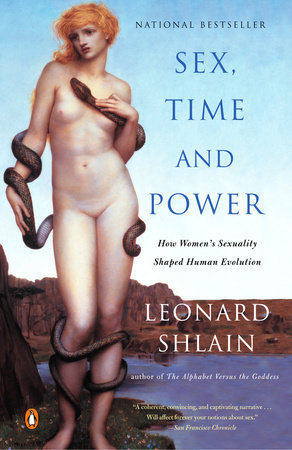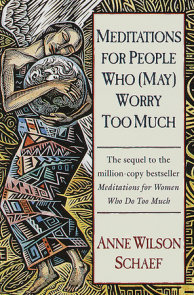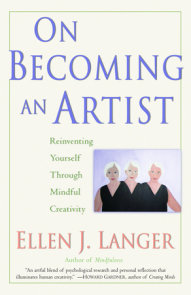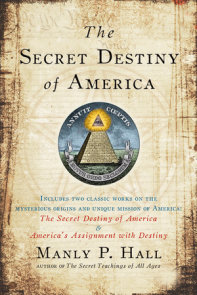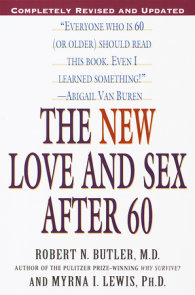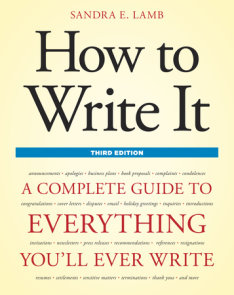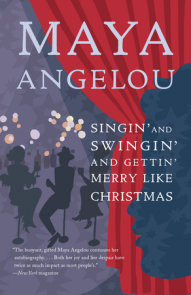READERS GUIDE
Introduction
An Introduction to Sex, Time, and PowerSince Eve bit into the apple, women often have been portrayed as wicked, weak, needy, or inferior. Yet women are the bearers of life and have also been cast as the heart of the home and the force behind the family. How did society acquire such conflicting views of women? Why have women wielded such little social authority when they command such vast reproductive responsibility? Where did our gender roles originate? In Sex, Time , and Power, Dr. Leonard Shlain draws on his nearly thirty-five years of experience as a surgeon to answer these questions and many more, creating an innovative and compelling thesis in which he pinpoints the evolution in women’s sexuality that is ultimately responsible for who we are today.
Looking back 150,000 years, Shlain writes that the narrowness of the newly bipedal human female’s pelvis and the increasing size of infants’ heads precipitated a crisis for the species; a drastic adaptation was needed to save our ancestors from extinction. Consequently, a new species—Homo sapiens—emerged through natural selection in which the female reproductive system was reconfigured by eliminating seasonal mating and synchronizing menses with the lunar cycles. But this novel system, while allowing women to rise above their primate relatives, robbed them of iron through menstruation, pregnancy, childbirth, and lactation. Shlain demonstrates that it was this confluence of sex and iron that precipitated the cultural developments to follow.
An accessible and informative author, Shlain recounts the difficult questions ancient men faced with the newly evolved women, including how to seduce a sexually liberated female and how to satisfy her intense need for iron. It was through men’s attempts to meet these challenges, Shlain writes, that human culture somersaulted forward: the invention of language afforded nuance to mating rituals; improved hunting techniques provided more varied and rewarding game.
However, female sexual independence itself had far-ranging repercussions. Through a series of deft connections, Shlain demonstrates how women’s menses led to an understanding of time, and how that in turn inspired humans to cultivate religion, art, and humor. In addition, he explains why men transformed their communities into patriarchal societies based on long-term, monogamous pair bonds, and how women’s contributions within those societies were devalued through time.
It is thanks to Shlain’s bold and provocative work that readers have the opportunity to address the omissions of history and science, and reexamine the mysteries of evolution—a process as fascinating and complicated as the women who generated it. By turns respectful and irreverent, Dr. Leonard Shlain’s dynamic exploration of the influence women have exerted on the development of the species will challenge readers’ thinking on the gender roles of yesterday, today, and tomorrow.
Questions and Topics for Discussion
1. The author writes that historically “private space was under a woman’s sphere of influence but public space fell under the purview of men” (page 341). What happens when the private and public spaces meet? How does one’s home serve as a microcosm for society?
2. What are your opinions on the division of power between the sexes? Should men and women have set roles within a society or should responsibilities be dictated by ability? How do gender roles affect your life as compared to the lives of your parents? The lives of your children?
3. The author describes adolescence as a time of sexual experimentation and initiation. How does this relate to your own experience as a teenager? How did your family and friends prepare you for this transformation?
4. Shlain proposes that menses was the innovative device “that taught our species how to tell time” (page 184). How do you mark the passage of time, in both small and large increments? What intimate, familiar, or practical markers do you use in your daily life?
5. Gyna sapiens, to use the author’s term, was the first female to understand and subsequently manage her own reproductive processes. How, if at all, does this mirror the current debate topics of birth control and abortion? How is women’s sexuality represented and affected by today’s society with regard to the media, education and healthcare?
6. According to Sex, Time, and Power, the root of misogyny is men’s anger toward women’s ability to refuse sex. Discuss how this anger has manifested itself over the course of human evolution. Are there any current events that lend credence to this explanation?
7. Examine the list of traits attributed to Jung’s anima/animus divisions of the psyche (page 209). Which characteristics can you identify in your own personality? How do these manifest themselves in your life?
8. Which rituals typify our society’s approach to sex, time, and power today? Are there any historic rituals being phased out by contemporary culture? Is this a good or a bad thing? Are we creating new rituals to replace the old ones, and if so, what are they?
9. Do you agree with Shlain’s thesis? What were the strongest and weakest arguments made? Which of the author’s statements most surprised you?
About this Author
A Conversation with Leonard ShlainYou’ve done exhaustive scientific, historical, and artistic research. What was the most enjoyable aspect of creating Sex, Time, and Power? Did any of your research results shock you? What was the most affecting discovery?
The act of crafting a book as complex and innovative as Sex, Time, and Power was a joy. I loved doing the research because I learned so many new things, and I am particularly excited when I conjure just the right metaphor to convey a complex idea that I am trying to get across to the reader. I can’t say that anything I researched shocked me, but I came away from this four-year writing project with an increased appreciation for human ingenuity and creativity. I stand in awe before the many stunning and inventive explanations for human sexual behavior emanating from researchers in these fields. Both in the preface and the epilogue, I relate the key “aha” insights of discovery that propelled me to write this book.
In Sex, Time, and Power you write, “Some might wonder why a surgeon would dare to wander so far from his field of specialized expertise to enter the bramble-ridden thicket of human sexuality” (page xv). This is not your first book concerning female sexuality. What is it that draws you to study humanity from the female perspective? What have the reactions been from other members of the scientific community? Are there are any similarities in reaction within specific fields?
A surgeon must embody the virile qualities of courage, action, and dispassion. At the same time, a surgeon must possess the womanly traits of tenderness, love, and compassion if he expects his patients to get well quickly. The androgynous mixture the field calls forth makes a surgeon who is well disposed to his feminine side to be a perfect spokesperson for the anima.
I hate injustice and intolerance and I have felt that women have suffered from both at the hands of male-dominated cultures. If in some small way I could diminish either or both, I would be greatly gratified.
The reaction from the other members of the scientific community has been mixed, but in general, the enthusiastic supporters far outnumber the naysayers. Some academics have been threatened, I believe, by having a nonspecialist traipse through their field. Others have wholeheartedly endorsed the ideas embodied in my books. I guess the proof of their value is that all three of my books are currently used as textbooks in a wide variety of college courses.
Early in the book, you share a wrenching experience from your days as a young physician concerning pregnant mothers and anemia. With the current state of vitamin- and mineral-enhanced foods, how is the health of the women that you see in your practice today? Are there any risks involved with nutritionally enhancing foods? Are men and women currently on equal ground in terms of health?
There is probably more nonsense written about diets today than any other field of so-called science. I felt that I should call attention to the obvious. Why, out of 270 different species of primates, are we the one that hunts and kills the most animals and eats the most meat? If all the other primates can get along fine on a diet of fruits, roots, nuts, and shoots, why did we deviate from this diet?
Today there are a wide variety of nutritional supplements that one can buy and many fortified foods. The dietary problems that plagued archaic humans differ significantly from those that are causing imbalances today. In general, though, an informed woman making dietary choices in technologically advanced societies has the opportunity to eat healthily.
Women’s health has lagged behind men’s because of the bias of society to place men’s health issues as primary and women’s as secondary. The fact that many insurance companies will pay for Viagra but not the Pill says it all. The rise of the feminine, however, has begun to address this inequality. Despite all the advances in medicine, old biological clocks continue to rule. Women outlive men by seven years on average. The human female is the longest-lived terrestrial mammal, indicating that evolution intended to build her to last.
You write that “the reason women bleed so copiously every month is so that humans could anticipate the future” (page 184), as the florid nature of human menstruation serves no other purpose. Humans are constantly adapting; we not only understand the concept of time, we’ve created technology to both monitor and reverse it. Is it possible that evolution could reduce or eliminate menses as unnecessary? Would that affect other human sexual behaviors?
The fact that florid menses had not been culled from the human genome speaks to the recentness of the human grasp of the concept of extended periods of time. And this discovery fueled the extraordinary Great Leap Forward, also called the Upper Paleolithic Revolution, which occurred 40,000 years ago. Lunar calendars carved in bones began to appear in the archaeological record in conjunction with finely wrought grave goods, habitual burials, and the first examples of representational art. These events, which I propose resulted from natural selection’s coordinating women’s menses and entraining their periodicity with that of the moon, have been so recent that not enough time has elapsed for evolution to eliminate menses.
Drug companies will begin marketing a pill next year that eliminates menses because no one can quite figure out why it is to a woman’s advantage to bleed each month.
There is a clear dichotomy in contemporary society’s attitude towards sex, at once permissive and puritanical. Female sex appeal is used endlessly in advertising while debates rage regarding women’s reproductive rights, and menses is a taboo subject in polite conversation. Could you elaborate further on the power of women’s sexuality today in relation to your thesis?
I believe the fact that women gained the power to refuse sex when they ovulated was the adaptation that convulsed relations between the sexes. The schizophrenic attitudes toward sex result from patriarchal religions and laws instituted by men that were designed with the intention to abrogate women’s power. Because of immense societal, economic, and technological changes in contemporary culture, we are experiencing a massive reconfiguration in the power relationships between the sexes. The Pill, in vitro fertilization, sperm banks, and cesarean sections are all examples of advances that have changed the equation that regulated relations between men and women in hunter-gatherer societies. The stresses apparent today result from having a nervous system basically designed for small nomadic tribes in which there was a deep division of labor between the sexes.
Considering both the positive and negative attributes of Jung’s anima and animus profiles, how do you imagine human culture would have been altered—for better or for worse—if women had retained the power that their sexual autonomy initially provided? Are there matriarchal societies extant that could serve as an example? Is it possible to have a society where the genders are perfectly equal in power and responsibility?
There are no significant historical or contemporary societies in which women have more power than men. There are a few in which women exercise power commensurate with men. For example, in many tribes that comprised the greater Iroquois Nation in the northeastern North American continent, it was a common practice to only allow the mature women of the tribe to vote for the chief. They commonly voted for a man, but just imagine what kind of society we would have today if only women of a certain age had the franchise! I strongly believe that our culture is stuck in a too yang, left-brain, macho mode and that what is sorely needed in each individual and the culture at large is more yin, right-brain, feminine energy to restore balance. This topic will be the subject of my next book, Leonardo’s Brain: Understanding da Vinci’s Creative Genius.
You use narrative techniques not normally found in scientific texts to elucidate your thesis. What is the basis for such artistic decisions? How does the efficacy of your style change, if at all, during lectures or on the page? How does your writing style affect the message that is conveyed?
I wanted to write an accessible book that conveyed my ideas both to a general audience and specialists—a fine line to walk by the way. I am a storyteller at heart and I believe I enliven the text by using a non-text-booky, relatively jargon-free style. My presentations are image-rich and Powerpoint-enhanced and they typically contain three to four hundred images drawn from art. My regret is that the reader cannot see all the images I use in my presentations. If I included more than a bare minimum, the cost of the book would become prohibitive. I believe information is best learned if it is acquired in a process that is fun, and I have always tried to make my readers enjoy themselves while reading my prose.
At the end of the book, you provide your readers with your email address for further discussion. What kind of questions has your book prompted? Have these reactions helped you as a writer? As a doctor?
The email prompt has warmed the cockles of this writer’s heart! Ordinarily, an author does not have the opportunity to communicate directly with his or her readers. I routinely hear from people from all walks of life, all different educational backgrounds, and all different perspectives. Feedback is essential for learning. Readers have picked up errors in the text that my editors or myself have missed. Mostly, I am touched by the kudos sent my way by grateful readers. All doctors benefit from an increased dose of humanity, and my reader’s responses have upped the dosage. I also have a bulletin board on my website sextimepower.com. Readers have posted there asking questions, raising issues, and debating my ideas. It is fun for me to see what they are writing.
You write that this book came about, in part, as an extrapolation from your previous book, The Alphabet Versus the Goddess. Do you feel you’ve satisfied your curiosity on the link between sex and social evolution? Have you been inspired to begin research in a new field?
I have several ideas for other books that occurred to me while I was writing Art and Physics, The Alphabet Versus the Goddess, and Sex, Time, and Power. My problem (if you could call it a problem) is that I have ideas for about five more books that are busy circling my brain waiting for landing rights. It is all a matter of available time. Carving out the hours to research and write while conducting a busy life is my greatest challenge. As I mentioned above, I am already deep into my next book about Leonardo, which will continue a theme that runs through all of my books. The duality of our lives as embodied by the art/science, feminine/masculine, and right-brain/left-brain split. Please stay tuned.









